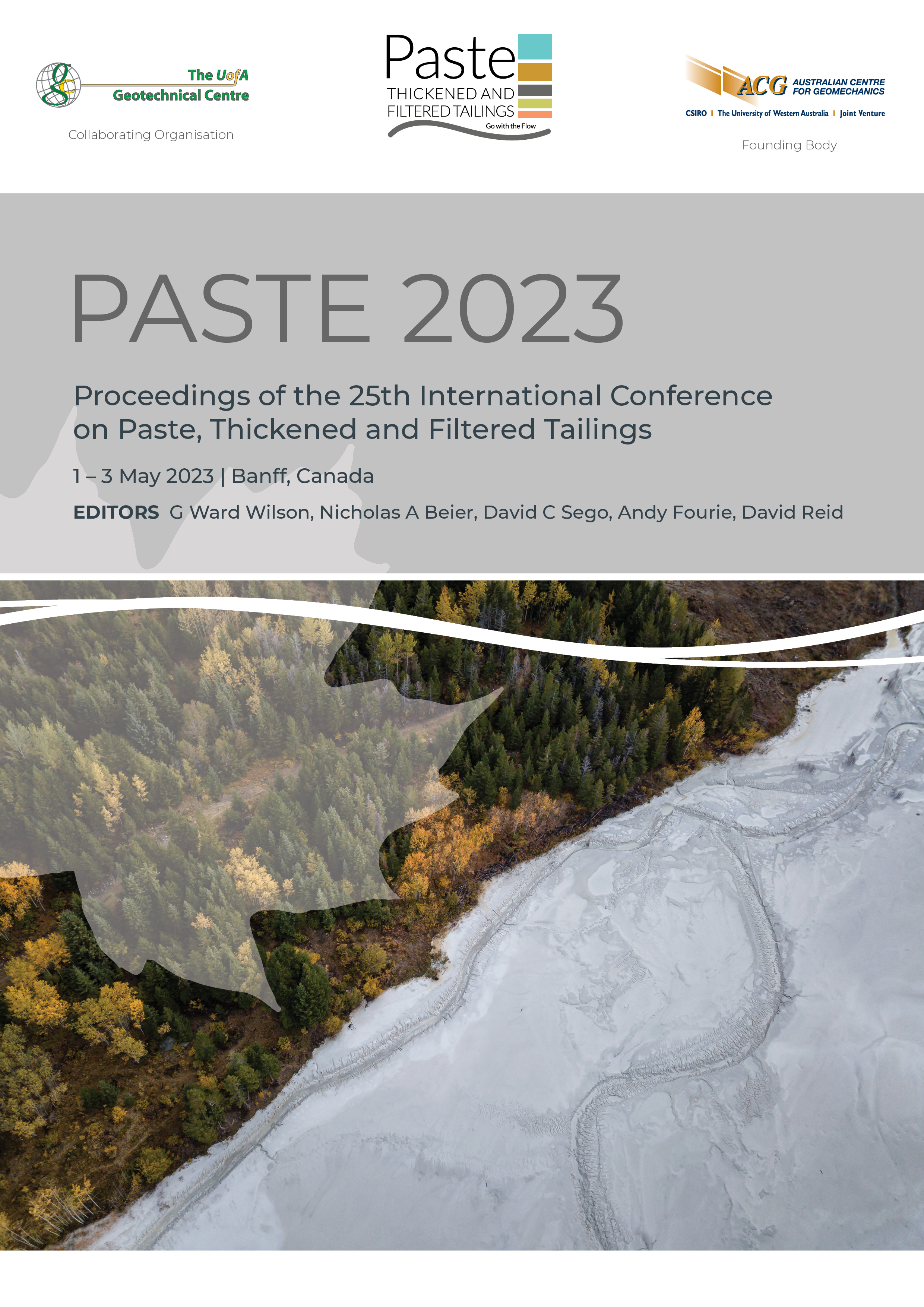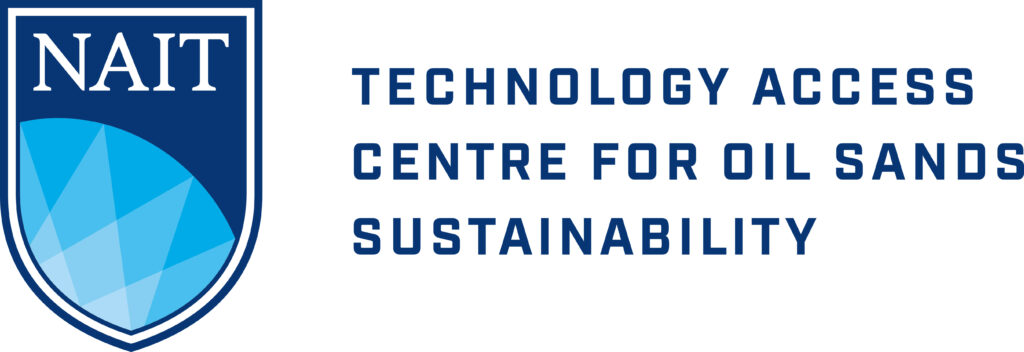Estimating rheological properties of liquefied tailings for dam break simulation using site-specific parameters and laboratory testing

|
Authors: Pirouz, B; Lu, Z; Javadi, S |
DOI https://doi.org/10.36487/ACG_repo/2355_48
Cite As:
Pirouz, B, Lu, Z & Javadi, S 2023, 'Estimating rheological properties of liquefied tailings for dam break simulation using site-specific parameters and laboratory testing', in GW Wilson, NA Beier, DC Sego, AB Fourie & D Reid (eds), Paste 2023: Proceedings of the 25th International Conference on Paste, Thickened and Filtered Tailings, Australian Centre for Geomechanics, Perth, pp. 629-638, https://doi.org/10.36487/ACG_repo/2355_48
Abstract:
Tailings dam failures, claiming human lives and causing catastrophic environmental impact, are unfortunately still frequently reported around the world. The tailings dam break simulation using site-specific parameters has now become an essential and critical part of the design, operation and closure cycle of every tailings storage facility (TSF), and is a requirement in many guidelines such as ANCOLD (2012), CDA (2021) and ICMM (2020). Urging from the mining industry and regulatory authorities for the development of better and more comprehensive simulating techniques that can accurately predict the flow behaviour of liquefied tailings in the hypothetical scenario of a tailings dam breach has significantly increased in recent years. The tailings deposited in a TSF often form a density profile with depth as the tailings consolidate and gain strength. This process increases the solids concentration and shear strength of the tailings within the TSF to a range that often makes direct measurement of the rheological properties of samples from the site using conventional bob and cup rotary viscometry impractical. Consequently, this imposes a challenge for obtaining reliable results from the tailings dam break simulation and needs to be overcome. A methodology is proposed in this paper for estimating the rheological properties of liquefied tailings at high solids concentrations when the direct measurement technique is impractical. The method is based on combining site-specific parameters such as the in situ dry density with laboratory-measured parameters such as the residual shear strength of the tailings after failure, and the bob and cup rotary viscometry data at lower solids concentrations. The method can be applied to establish a comprehensive understanding of the rheological behaviour of liquefied tailings at the wide range of solids concentrations required for dynamic tailings dam break modelling.
Keywords: tailings dam break analysis, rheology, liquefied tailings, residual strength
References:
ANCOLD 2012, Guidelines on Consequence Categories for Dams, ANCOLD, Hobart.
CDA 2021, Technical Bulletin: Tailings Dam Breach Analysis, Canadian Dam Association, Markham.
FLO-2D 2022, FLO-2D Pro. Build 21-08-23, computer software, www.flo-2d.com
ICMM 2020, Global Industry Standard on Tailings Management, International Council on Mining & Metals, London.
Javadi, S, Slatter, P, Pirouz, B, Gupta, R & Bhattacharya, S 2016, ‘The laminar turbulent and transitional free surface flow of non-Newtonian Suspensions’, Proceedings of the 17th International Conference on Transport and Sedimentation of Solids Particles, Delft, The Netherland.
Jeong, SW 2019, ‘Shear rate-dependent rheological properties of mine tailings: determination of dynamic and static yield stresses’, Journal of Applied Sciences, vol. 9, no. 22,
Lu, Z, Tan, Y & Pirouz, B 2022, ‘Non-Newtonian tailings dam break analysis and released volume estimation using site-specific parameters’, Proceeding of the 8th International Conference on Tailings Management, Gecamin Publications, Santiago.
Piciullo, L, Storrosten, BE, Liu, Z, Nadim, F & Lacasse, S 2022, ‘A new look at the statistics of tailings dam failures’, Engineering Geology Journal, vol. 303,
Seddon, KD 2007, ‘Post-Liquefaction Stability of Thickened Tailings Beaches’, in R Jewell & AB Fourie (eds), Paste 2007: Proceedings of the Tenth International Seminar on Paste and Thickened Tailings, Australian Centre for Geomechanics, Perth, pp. 395–406.
© Copyright 2026, Australian Centre for Geomechanics (ACG), The University of Western Australia. All rights reserved.
View copyright/legal information
Please direct any queries or error reports to repository-acg@uwa.edu.au
View copyright/legal information
Please direct any queries or error reports to repository-acg@uwa.edu.au



